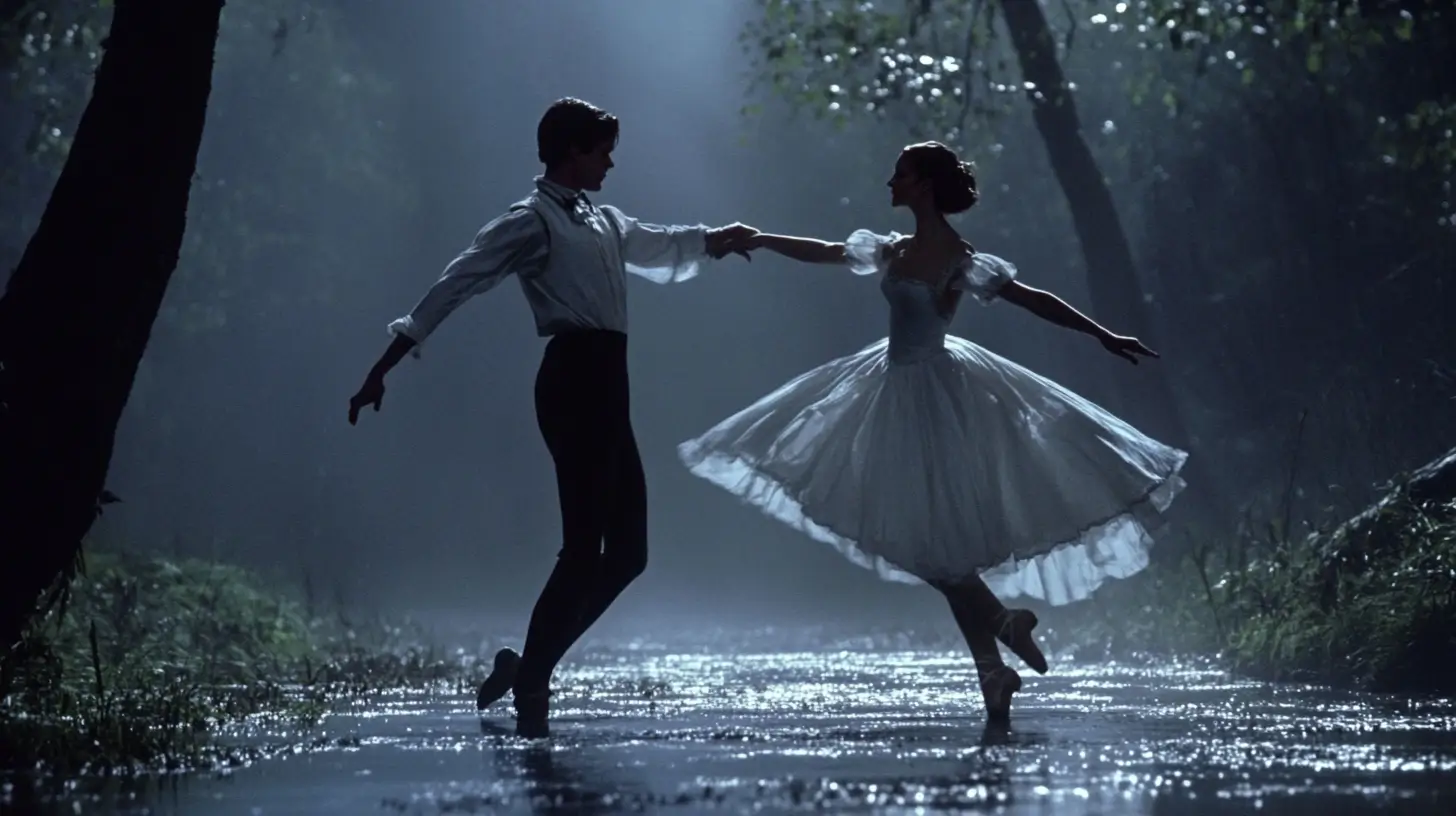Ballet Giselle is a celebrated work in classical dance. Premiering in 1841, it tells a poignant story of love, deception, and redemption. With its captivating choreography and emotional depth, Giselle has stood the test of time and continues to enchant audiences around the globe. This article explores the origins, key acts, characters, and timeless appeal that make Giselle a beloved ballet to this day.
Graceful Insights
- Born in 1841, Giselle remains a timeless ballet. Its iconic music and choreography intertwines love, betrayal, and redemption.
- Act I highlights the tragic love story of Giselle and Count Albrecht, whose deceptive identities culminate in heartbreaking betrayal and Giselle’s untimely death.
- Act II plunges into the supernatural, showcasing Giselle’s protective spirit and the vengeful Wilis, ultimately revealing eternal love and sacrifice themes.
Art de Podcast
| Aspect | Details |
|---|---|
| Title | Giselle |
| Composer | Adolphe Adam |
| Choreographers | Jean Coralli and Jules Perrot (Original), Marius Petipa (notable revivals) |
| Premiere Date | June 28, 1841 |
| Premiere Location | Salle Le Peletier, Paris |
| Librettists | Jules-Henri Vernoy de Saint-Georges and Théophile Gautier |
| Based on | A German legend from Heinrich Heine’s work “De l’Allemagne” and Victor Hugo’s poem “Fantômes” |
| Genre | Romantic Ballet |
| Plot Summary | The ballet tells the story of a peasant girl, Giselle, who dies of a broken heart after learning that her lover, Albrecht, is betrothed to another woman. In the afterlife, she joins the Wilis, spirits of betrayed women who seek revenge on men. However, Giselle’s love for Albrecht transcends death, and she protects him from the Wilis’ wrath. |
| Principal Characters | – Giselle (peasant girl) – Albrecht (nobleman disguised as a peasant) – Hilarion (a gamekeeper in love with Giselle) – Myrtha (Queen of the Wilis) |
| Themes | Love, betrayal, forgiveness, supernatural forces |
| Significance in Ballet History | Giselle is considered one of the greatest Romantic ballets, featuring a blend of human emotion and the supernatural. Giselle’s iconic role is known for its demanding emotional and technical depth, requiring strong acting and technical ballet skills. |
| Act Structure | Two Acts |
| Signature Scenes | – Giselle’s “Mad Scene” (Act I) – Dance of the Wilis (Act II) – Albrecht’s redemption dance (Act II) |
| Famous Productions | – Paris Opera Ballet – Royal Ballet – Bolshoi Ballet – American Ballet Theatre |
| Iconic Performers | – Carlotta Grisi (original Giselle) – Anna Pavlova – Alicia Markova – Natalia Makarova – Svetlana Zakharova |
| Cultural Influence | Giselle remains a key part of the classical ballet repertoire, often symbolizing the epitome of the Romantic era in dance. Its exploration of love, betrayal, and the ethereal world has inspired various media adaptations and modern interpretations. |
The Origins of Giselle
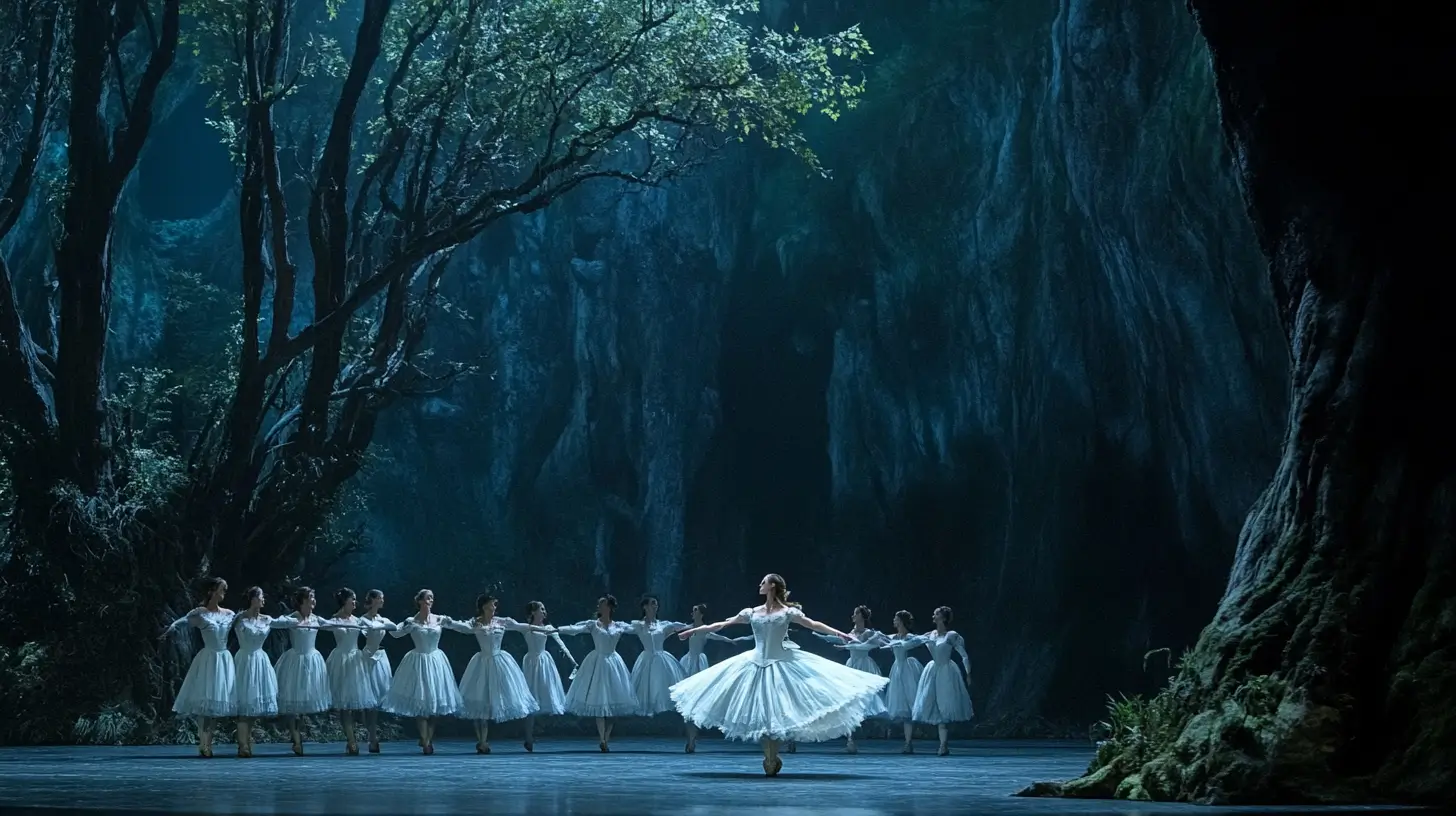
Giselle’s enchanting journey began with its premiere on June 28, 1841, at the Salle Le Peletier in Paris. The romantic ballet show, choreographed by Jean Coralli and Jules Perrot with music by Adolphe Adam, quickly ascended to fame, captivating audiences across Europe and the United States. Its immediate success was a testament to the compelling narrative and exquisite artistry the creators infused into the performance.
The role of Giselle was originally crafted for the talented ballerina Carlotta Grisi, whose portrayal breathed life into the character with unparalleled grace. Giselle’s blend of human vulnerability and supernatural allure and the emotional depth of its music and choreography solidified its place as an iconic ballet in the annals of dance history.
Uncovering the layers of love, deception, and redemption reveals why Giselle’s mother remains a timeless treasure.
Act I: Love and Betrayal
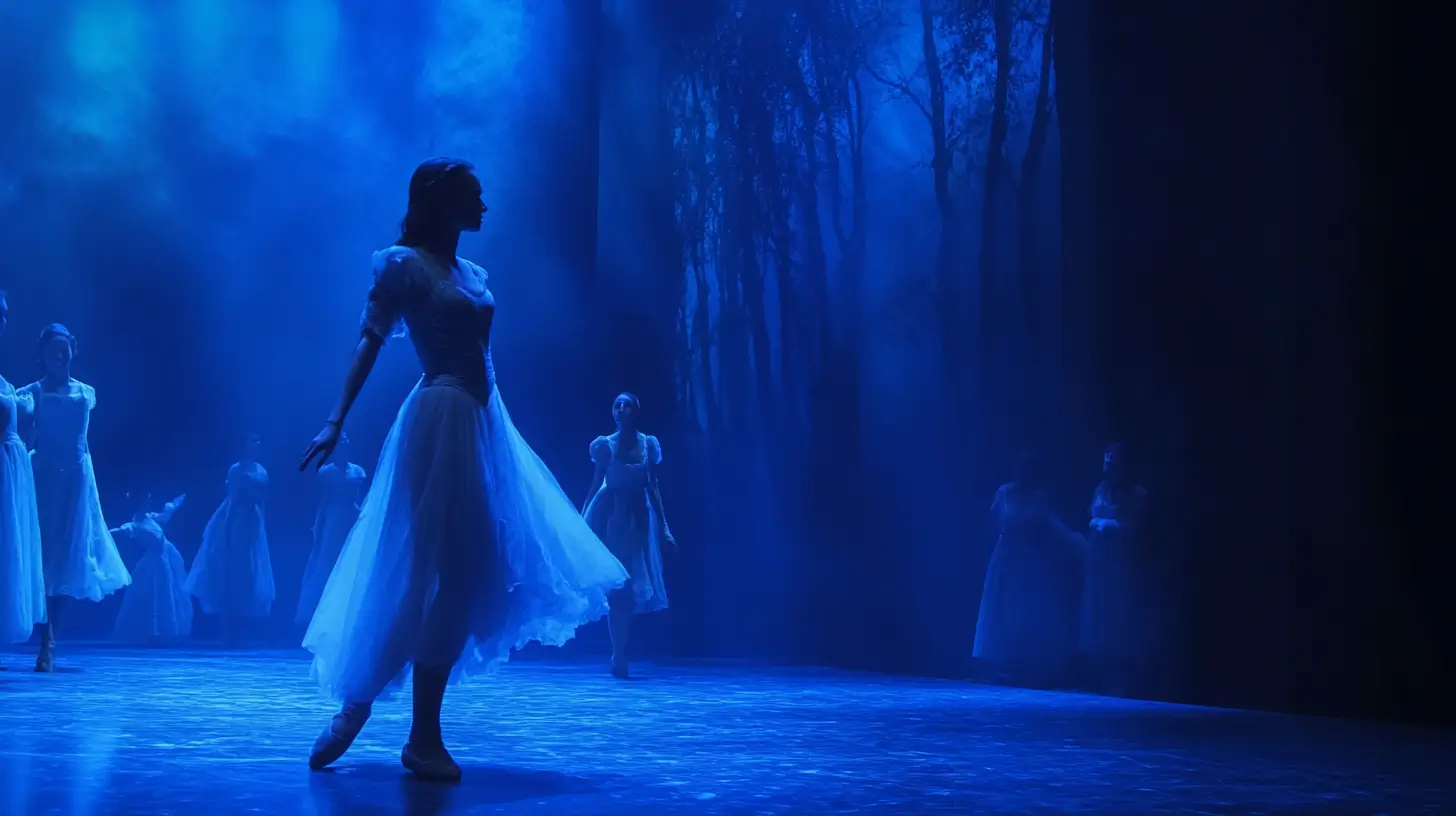
Act I of Giselle introduces us to a world brimming with joy and festivity, set against the backdrop of dancing dancers in a quaint village during a harvest celebration dance. With its lively tones, the music and dance mirror the dancing and vibrant atmosphere, setting the stage for the unfolding drama. This act is a tapestry of emotions, weaving together love, betrayal, and heartbreak themes.
As we navigate through the village setting, we encounter Giselle, a young peasant girl, and witness the poignant moments of her love story with Count Albrecht, who disguises himself to Giselle as a commoner. The second act culminates in a devastating revelation, leading to Giselle’s and Albrecht’s tragic demise.
These pivotal scenes deserve a closer examination.
The Village Setting
The story of Giselle’s mother unfolds in a picturesque village in the German Rhineland, where the air is filled with the scent of ripe grapes and the laughter of villagers celebrating the harvest. With its lush vineyards and bustling festivities, this vibrant setting starkly contrasts the darker themes that will soon emerge.
Amidst the revelry, Giselle’s innocence and charm captivate everyone around her. Her joyful dances and carefree spirit make her the heart of the celebration, embodying the essence of youth and love. Yet beneath this cheerful exterior, a tale of hidden identities and impending heartache is about to unfold.
Young Peasant Girl
Giselle, a young peasant girl, epitomizes innocence and vulnerability. Her delicate, broken heart, both physically weak and emotionally tender, is deeply entwined with her love for Count Albrecht, whom she knows only as Loys, a fellow peasant. Her naivety and pure-hearted devotion make her a tragic figure destined for heartbreak.
Unaware of Albrecht’s true, noble identity, Giselle’s love for him is genuine and unwavering. Her character’s journey from blissful ignorance to tragic enlightenment is a poignant reminder of the fragility of love and the devastating impact of betrayal.
Albrecht Disguises
Count Albrecht, a nobleman, disguises himself as a peasant named Loys to pursue his romantic interests without revealing his true identity. This dual life allows him to experience the simplicity and purity of village life, far removed from his noble obligations.
Albrecht’s deception is driven by a desire to win Giselle’s love, but it also sets the stage for the inevitable betrayal that will shatter her world. His actions, though rooted in genuine affection, are fraught with the complications of his hidden truth and the looming presence of Albrecht’s betrothed.
Hilarion Interrupts
Enter Hilarion, the gamekeeper, whose unrequited love for Giselle fuels his suspicions about Albrecht Loys. Hilarion’s jealousy of Albrecht and Giselle and determination to uncover the truth about Albrecht’s identity add a layer of tension to the narrative. His interruptions during Albrecht’s courtship of Giselle create moments of conflict and foreshadow the dramatic revelation.
Hilarion’s role is pivotal as he attempts to have Albrecht return to protect Giselle from the deception of Albrecht’s returned senses. Still, ultimately, his actions propel the story toward its tragic climax. His love, though genuine, is overshadowed by the more complex and sad love between Giselle and the Albrecht returns.
Heartbreaking Revelation
The climax of Act I is marked by the arrival of Bathilde, Albrecht’s fiancée, whose presence reveals Albrecht’s disguises of his betrayal of Giselle. The sight of Bathilde’s elegant attire starkly contrasts with Giselle’s simple peasant dress, driving home the reality of Albrecht’s deception. This revelation plunges Giselle into a despair so deep that it leads to her tragic madness and eventual death from a broken heart.
Giselle’s heartbreaking realization of Albrecht’s true identity and engagement to Bathilde is a moment of profound emotional turmoil. Her descent into madness and subsequent death underscores the devastating impact of Albrecht’s betrayal of Giselle, setting the stage for the supernatural elements of Act II.
Act II: The Supernatural Realm

Act II of Giselle transports us to a haunting forest where the supernatural reigns supreme. The scene is set at Giselle’s grave, shrouded in eerie beauty and mystery. Here, the vengeful spirits of the Wilis, women who died before their wedding day, seek retribution against men who dare to enter their domain.
Giselle’s spirit appears to protect Albrecht from the Wilis, showcasing her enduring love even beyond death. This second act, steeped in ethereal and haunting elements, contrasts sharply with the earthly innocence of Act I.
Exploring the supernatural realm offers a deeper understanding of its enchantment.
Giselle’s Grave
The setting of Giselle’s grave is a secluded forest, bathed in the cold glow of the moon at night. This eerie backdrop, with its dark trees and haunting silence, evokes a sense of otherworldly beauty and melancholy.
Giselle’s tombstone, illuminated by the moonlight, becomes a focal point of this ghostly scene. With its ethereal ambiance, the forest is a perfect stage for the supernatural events that unfold, heightening the romantic ballet show’s dramatic tension and emotional depth.
Wilis and Their Queen
The Wilis, led by their formidable queen, Myrtha, are the vengeful spirits of women who have been wronged in love. These ethereal beings embody the ballet’s supernatural themes with their flowing white dresses and ghostly appearances.
Myrtha, the Queen of the Wilis, is a powerful and commanding presence. Her leadership and the Wilis’s relentless pursuit of two acts of vengeance against men create a chilling and intense atmosphere, contrasting with the innocence of the village scenes in Act I.
Giselle’s Spirit Appears
Giselle’s spirit emerges from her grave, transforming from a naive young woman into a protective force. Her ethereal presence shields Albrecht from the vengeful Wilis, showcasing her enduring love and forgiveness. As Giselle and Albrecht return together, her love transcends the boundaries of life and death.
This act of protection emphasizes the themes of eternal love and redemption that permeate the ballet. Giselle’s actions, even in death, highlight her selflessness and the power of love to transcend the boundaries of life and death.
Dawn and Redemption
The Wilis lose power as dawn breaks, and Albrecht is saved from their deadly dance. The arrival of daylight symbolizes the dawn of hope and redemption for Albrecht, starkly contrasting the night’s haunting events.
Giselle’s ghost must return to her grave on her wedding day as the sun rises, fulfilling her tragic fate. This poignant ending underscores love, sacrifice, and the cyclical nature of life and death, leaving the audience with a bittersweet resolution.
Iconic Ballet Elements
![]()
Giselle is an iconic ballet for its emotional depth, supernatural elements, innovative choreography, and storytelling. The ballet’s themes of love, betrayal, and forgiveness resonate deeply, making it a timeless work of art.
The use of mime and expressive dance to convey complex emotions is a hallmark of Giselle. The haunting group dances of the Wilis dancers and the dramatic dance “Mad Scene” in Act I of Giselle are celebrated for their technical prowess and emotional intensity.
Combined with the ballet’s rich narrative, these elements ensure its enduring legacy in dance.
Meet the Key Characters
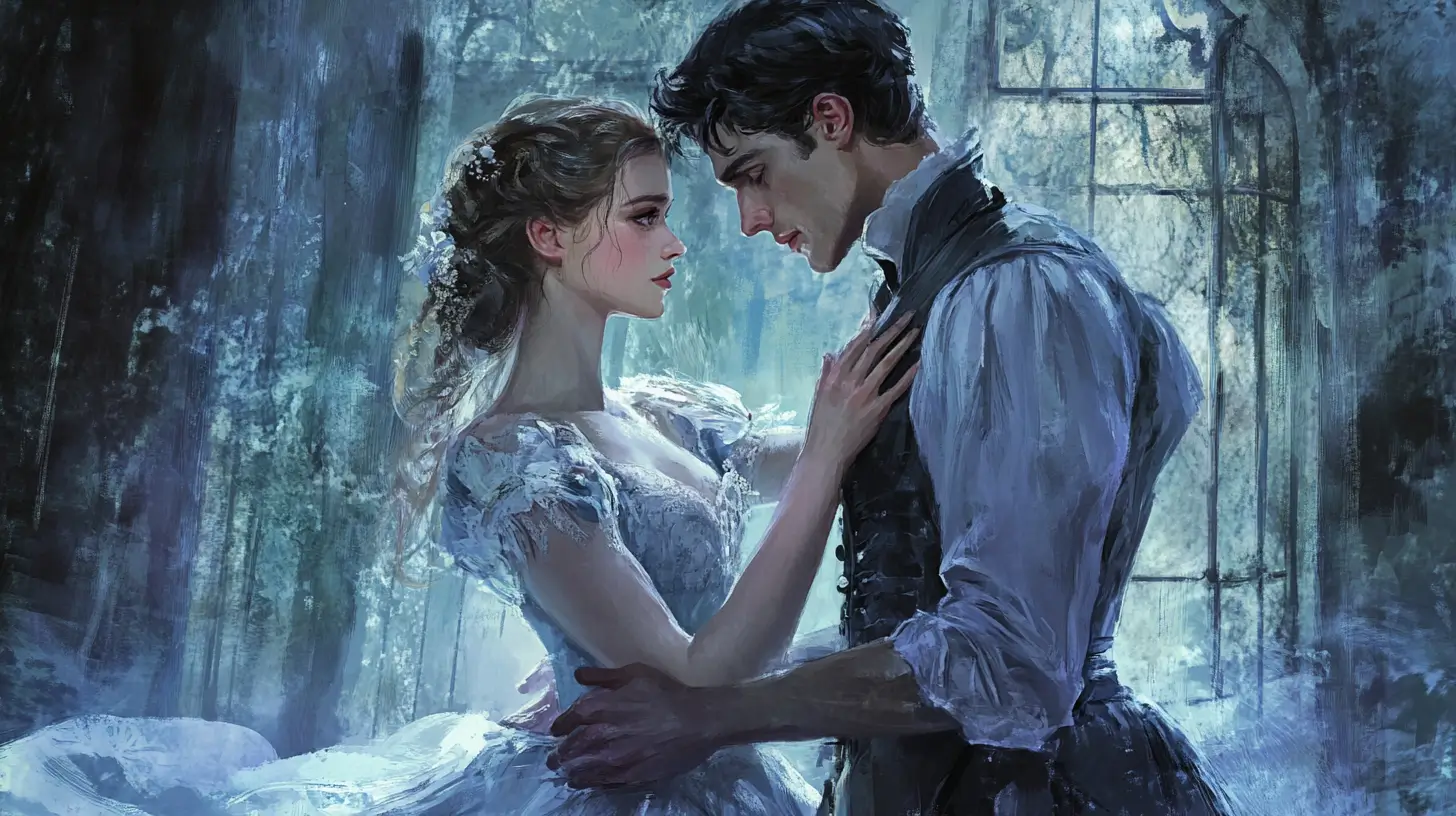
The characters of Giselle are as compelling as the story itself. From the innocent peasant girl to the nobleman in disguise and the vengeful queen of the Wilis, each character adds depth and dimension to the narrative.
Examining the key characters reveals the motivations, conflicts, and transformations that drive the story forward. Let’s meet these unforgettable figures who bring Giselle to life.
Giselle
Giselle, the young peasant girl, is the heart and soul of the ballet. Her love for dancing, dance, and dancing, and her innocent affection for Albrecht, whom she knows as Loys, are central to her character. Giselle’s spirit, rising from her grave to protect Albrecht, showcases her enduring love for dancing, dancing, dancing, and forgiveness.
Transforming from a naive girl to a protective spirit, Giselle highlights themes of love and sacrifice that define the ballet. Giselle’s journey is a poignant reminder to dancers of the power of love to transcend even the most tragic circumstances.
Count Albrecht
Count Albrecht’s dual identity as a nobleman and a peasant named Loys creates a complex character arc: his deception and the ensuing heartbreak of Giselle’s grave mark pivotal moments in the narrative. Albrecht’s themes, from the lively tunes of Act I to the mournful cello solo in Act II, reflect his emotional journey.
Giselle’s spirit saving Albrecht from the Wilis symbolizes his redemption and the enduring power of love. His character’s evolution underscores the ballet’s themes of love, betrayal, and forgiveness.
Hilarion
Hilarion, the gamekeeper, is driven by his love for Giselle and his suspicions about Albrecht’s true identity. His attempts to expose Loy and protect Giselle create tension and conflict.
The love triangle involving Hilarion, Giselle, and Albrecht adds depth to the narrative, highlighting jealousy and unrequited love themes. Hilarion’s role is crucial in propelling the story toward its tragic climax.
Queen of the Wilis
Myrtha, the queen of the Wilis, is a powerful and vengeful spirit. Her leadership and the contrasting musical themes that accompany her reflect her dual nature of calmness and intensity. As the leader crowned queen of the Wilis, Myrtha’s character embodies the themes of vengeance and supernatural power that define Act II.
Her presence adds a chilling and dramatic element to the ballet.
Famous Performances and Adaptations
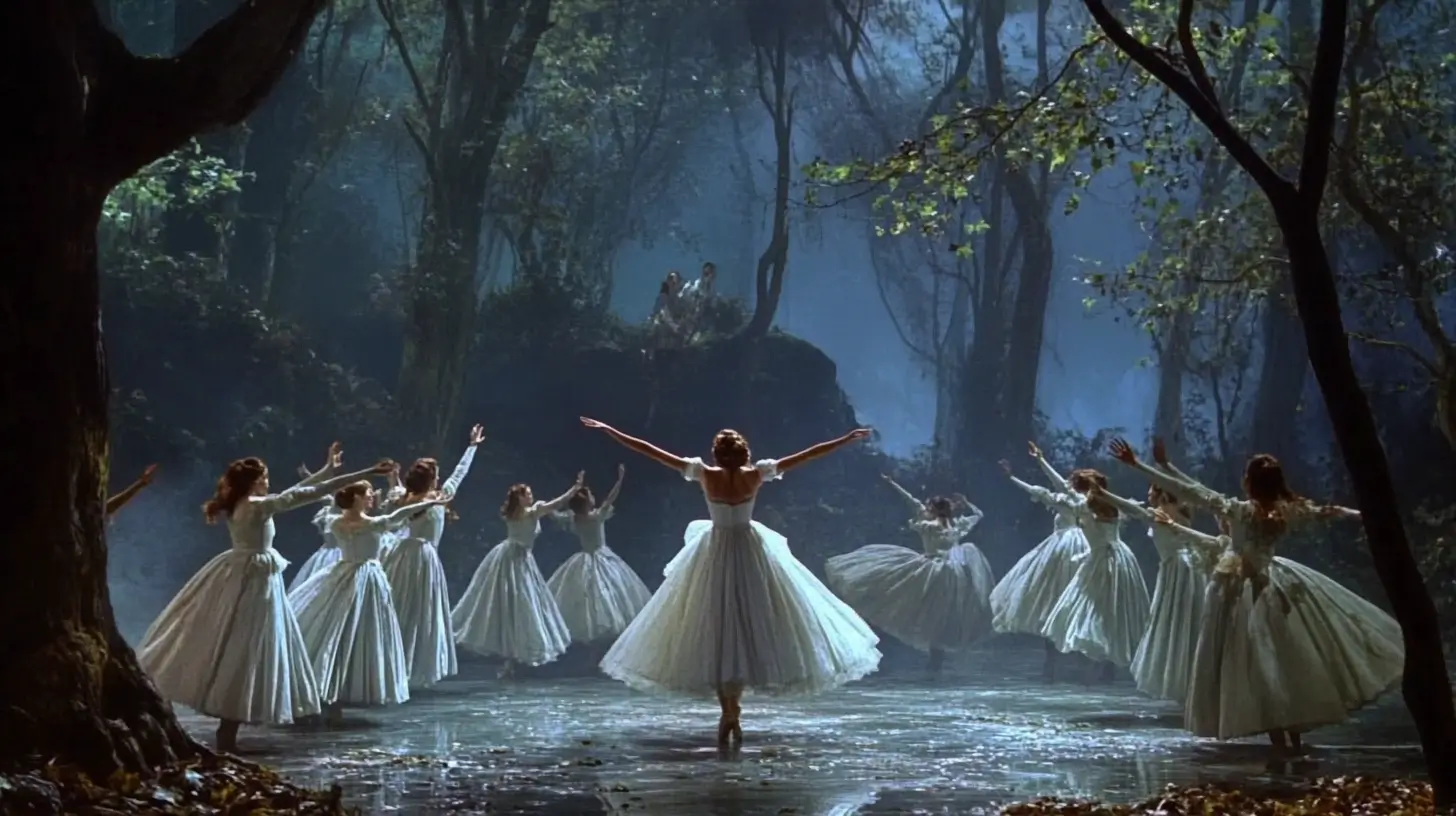
Over the years, Giselle has seen numerous iconic performances and adaptations that have left an indelible mark on the ballet world. One of the most notable performances was by Anna Pavlova in 1913, where she brought her unique interpretation to the role, captivating audiences with her ethereal grace.
Another significant revival was the 1911 production by Diaghilev’s Ballets Russes, featuring the renowned dancers Tamara Karsavina and Vaslav Nijinsky, which reignited interest in the ballet.
In 1984, the ballet was reimagined in a new context with ‘Creole Giselle,’ set in 1840s Louisiana and featuring Creole and African American characters. This adaptation not only highlighted the universal themes of the original but also brought a fresh cultural perspective to the timeless tale, demonstrating Giselle’s enduring appeal and adaptability across different eras and audiences.
Behind the Music
The music of Giselle, composed by Adolphe Adam, is a cornerstone of its emotional and narrative power. Adam’s score is renowned for its memorable melodies and how it enhances the ballet’s storytelling through character motifs and dynamic shifts in tempo. Each musical theme is meticulously crafted to reflect the character’s emotional journey, from the lively village dances in Act I to the haunting, ethereal strains of Act II.
In modern adaptations, such as Akram Khan’s Giselle, the original score by Adolphe Adam has been reinterpreted by composers like Vincenzo Lamagna, who infused it with contemporary elements while retaining its emotional core. This blend of old and new underscores the timelessness of Adam’s music and its ability to resonate with audiences across generations.
Resume
Giselle remains one of the most cherished and iconic ballets, a testament to its timeless themes of love, betrayal, and redemption. From its origins in 1841 Paris to its numerous adaptations and performances worldwide, the ballet continues to captivate audiences with its emotional depth and artistic beauty.
The story of Giselle, the young peasant girl, and her enduring love for Count Albrecht, set against the supernatural realm of the Wilis, offers a poignant reminder of the power of love and forgiveness.
As we reflect on the journey through Giselle, we are reminded of the ballet’s lasting impact on the dance world. Its rich narrative, innovative choreography, and evocative music ensure that Giselle will continue to enchant and inspire future generations. The timeless beauty of Giselle is a celebration of the human spirit, transcending the boundaries of time and space to touch the hearts of all who experience it.
Frequently Asked Questions
When did Giselle premiere?
Giselle premiered on June 28, 1841, captivating audiences at the Salle Le Peletier in Paris. Its haunting beauty resonates through time, forever etching its mark in ballet.
Who composed the music for Giselle?
The hauntingly beautiful music for Giselle was composed by Adolphe Adam, forever entwining his name with this timeless romantic ballet masterpiece.
What are the main themes of Giselle?
The haunting themes of Giselle—love intertwined with betrayal, the chilling specter of supernatural revenge, and the poignant search for redemption—leave an indelible mark on the soul. In the dance of passion and sorrow, the story captivates with its eternal struggle between the heart’s desires and the shadows of lost dreams.
Who are the Wilis in Giselle?
The Wilis are hauntingly beautiful yet vengeful spirits of women betrayed in love, led by their fierce queen, Myrtha. They embody the heartache and fury of those unjustly scorned, forever trapped in their sorrowful dance.
What is the significance of Giselle’s spirit appearing in Act II?
Giselle’s spirit emerging in Act II is a powerful testament to her unwavering love and forgiveness as she courageously shields Count Albrecht from the vengeful Wilis. Her presence is a haunting reminder that love transcends even death, illuminating the depths of her sacrifice.

